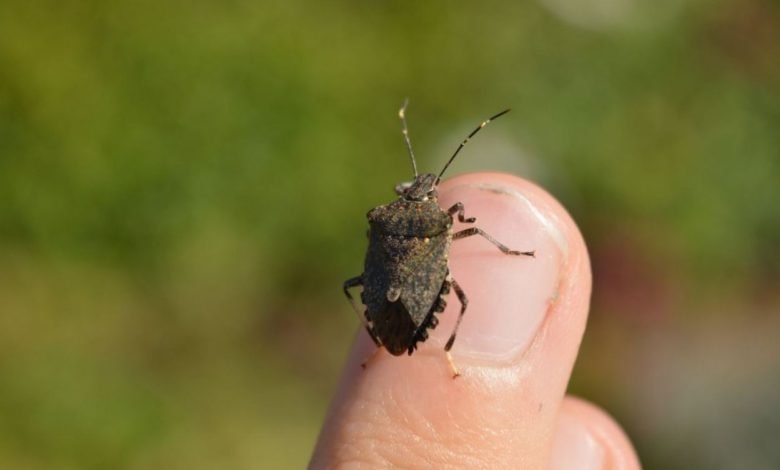
Once again, it’s that time of year, everyone. Unfortunately, stink bugs have re-emerged in our houses now that season has arrived. You’ve probably encountered these creepy-crawlies in numerous spots throughout your home, such as on window screens, walls, and vents.
You may not know much about this pest species, despite seeing them so often. If so, we’ve compiled seven facts about stink bugs to inform you; as the saying goes, “know your enemy!”
North America is a newcomer to stink bugs.
Brown marmorated stink bugs, the species that invades U.S. houses the most often, are really native to Asia and were mistakenly imported.
The arduous struggle to rid your house of these pests may seem like a lifetime’s work, yet the first sighting of this troublesome species in the United States occurred in 1998 in Allentown, Pennsylvania.
Since then, stink bug populations have increased, and they may now be found in practically every state and province in Canada.
- Stink bugs consume leaves, flowers, fruits, and crops such as soybeans. Additionally, they devour caterpillars and other insects.
- Stink bugs are common in orchards, gardens, and farms.
- Stink bugs do not harm people, but they may cause significant harm to crops and vegetation.
- Caulk any exterior cracks.
- Replace any damaged window or door screens.
- If you find a stink bug inside, quickly vacuum it up and dispose of the bag.
- If you see a stink bug in your garden, softly spray the area with an appropriate pesticide. At the conclusion of the growing season, keep weeds under control and clean up the garden.
Origin of stink bugs
The stink bug, a native of Asia, was mistakenly imported to the United States in the late 1990s. Due to the lack of natural predators in the United States, stink bugs have been able to quickly expand and become a major agricultural problem.
Why do they enter the premises?
As the temperature cools around the end of summer and beginning of autumn, stink bugs begin hunting for warm overwintering locations.
This prompts them to enter houses and other buildings that provide refuge. Early in the spring, stink bugs emerge from their overwintering sites and begin active again. During the warm months, they are commonly seen congregating in mass on the sides of buildings.
Are stink bugs dangerous?
It is not known that stink bugs attack people or cause property damage, but care should be used while handling them to prevent the emission of their offensive stench.
Their habit of invading houses in large numbers may be rather annoying. Even though stink bugs do not pose a direct hazard to humans, they are a problem for the agricultural economy because they ruin crops.
Stink bugs are genuinely attracted to their own odor.
The foul-smelling liquid secretion of stink bugs includes pheromones that attract other stink bugs. In the autumn, stink bugs exude this scent when they choose a suitable, warm location to cluster.
The greater the concentration of stink bugs, the stronger their odor. More stink bugs appear as their odor increases.
A single stink bug may lay up to 400 eggs.
A single female stink bug may deposit as many as 400 eggs in her brief lifespan. The eggs of stink bugs are laid in clusters of 20 to 30 that resemble barrels. In just 40 to 60 days, hatchlings may mature into adults after hatching from eggs.
There are no “mouths” on stink bugs.
They have sucking “mouthparts” that they employ to draw sap and juice from plant matter. They lack typical “mouths” and are incapable of biting or chewing food. These sucking mouthparts are powerful enough to pierce plants but not strong enough to harm humans.
- Their spray and Cilantra share something in common.
- A thread holding together a clump of cilantro
The odor of the brown marmorated stink bug has been likened to a variety of smells, including those listed above. Trans-2-octenal and trans-2-decenal are the primary compounds responsible for the BMSB’s offensive spray. This is what gives cilantro its distinctive aroma.
The chemicals in the spray may have a function other than repelling predators. According to a 2016 study, they “inhibit bacterial development” and “indicate that brown marmorated stink bug aldehydes are truly antibacterial agents and serve a multifunctional purpose for this insect.”
Stink bugs speak using vibrations.
Due to their lack of lips, stink bugs must communicate with one another in a unique manner, and it’s a really amazing method. They vibrate the plant they are standing on by performing certain abdominal movements.
They will even migrate to certain plant species, such as beans, that transmit their vibrations more effectively. In fact, stink bugs employ these vibrations in their mating rituals, highlighting the importance of selecting the proper plant. Who knew that stink bugs were so shrewd?
Stink bugs hibernate
Stink bugs undergo a condition of dormancy during cold weather. This condition is technically known as “diapause,” and it resembles hibernation in many ways. In a condition of diapause, stink bugs are able to live without food or water for extended periods of time.
They are able to endure these extended periods because their body temperatures drop considerably and their metabolisms almost cease. Differentiating diapause from hibernation is the fact that diapause does not endure throughout the winter.
Thankfully, diapause inhibits stink bugs from reproducing, which means they will not lay eggs in your house. In reality, they are unable to reproduce until the temperature warms up in the spring.
Infestation symptoms
Prior to entering homes in September and early October, stink bugs often assemble on external walls that get adequate sunlight. Adult stink bugs are also often seen around light fixtures, on curtains, and creeping along walls.
On milder winter days, stink bugs come out of their hiding places inside the house and swarm on the inside walls. This is one of the most obvious signs of a stink bug infestation that lasts through the winter.
Stink Bug Removal
A vacuum cleaner may be used to eliminate an infestation of stink bugs from a residence. Crushing insects produces their foul odor, but vacuum cleaners reduce the strength of the odor.
Important components of stink bug elimination include locating and closing the entrance site. For very bad infestations, you should call a pest control expert who will use the right methods to get rid of the pests.
How to stop an infestation of stink bugs
Eliminating access to the house is the best strategy to avoid a stink bug infestation. In order to do this, foundation cracks should be repaired with caulk or a similar material, and windows and doors should have their broken screens replaced.
Additionally, homeowners must inspect the siding, utility lines, and chimneys for cracks and repair them correctly.
Also, reducing the number of plants outside may stop stink bugs from living in yards and, as a result, from getting into homes.
Source:



